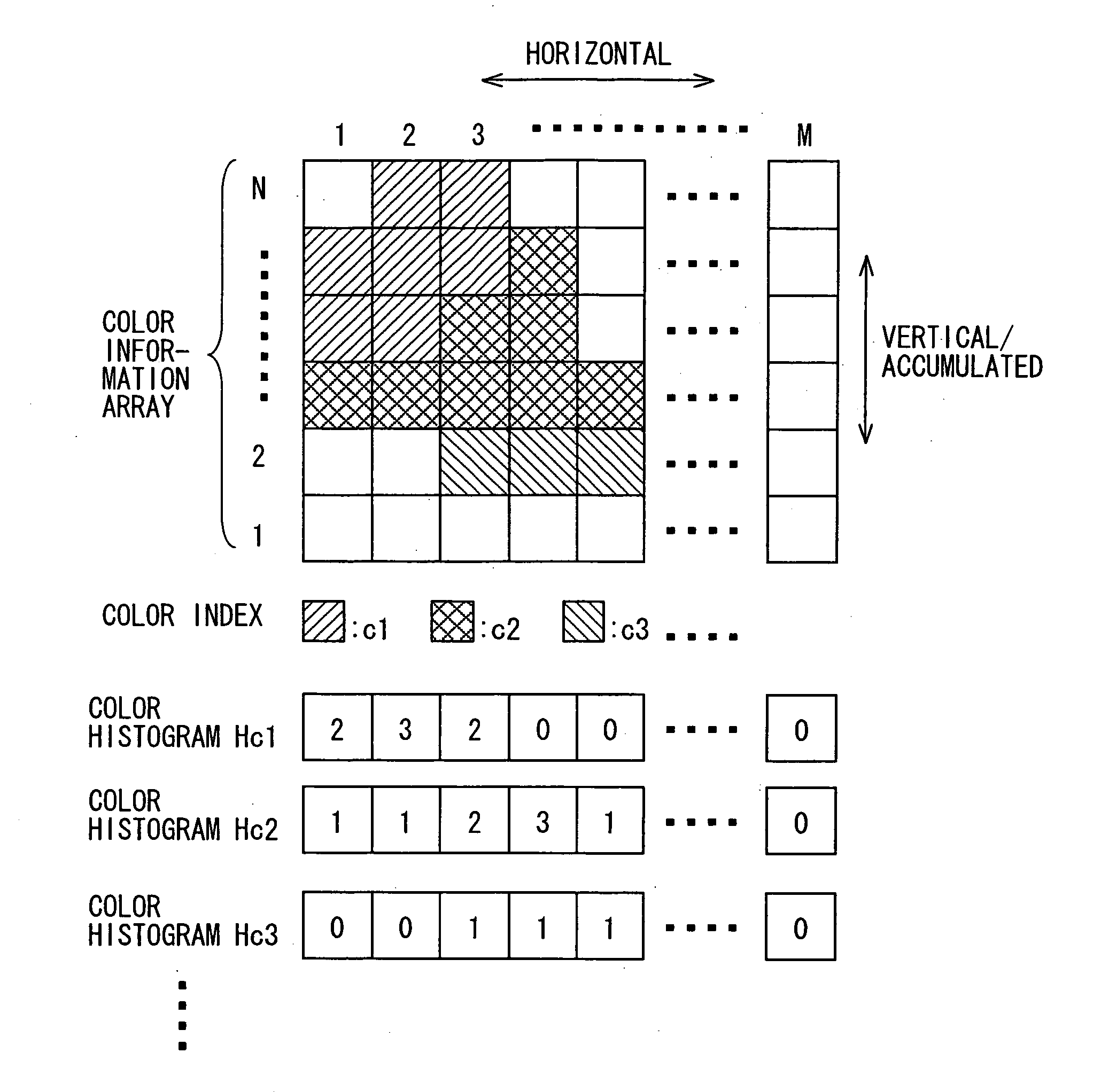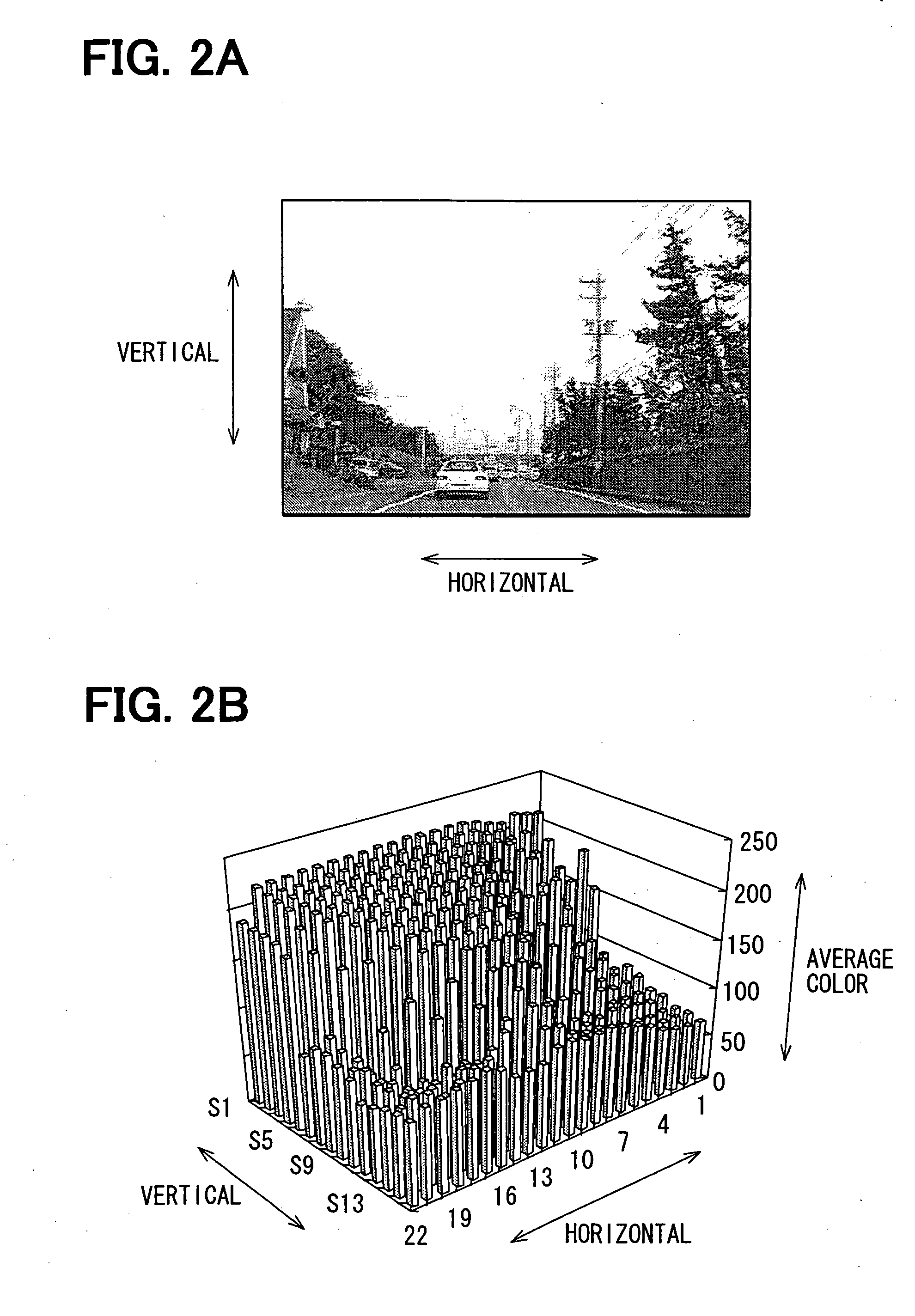Environment recognition device
a recognition device and environment technology, applied in the field of environmental recognition devices, can solve the problems of enormous processing load, inability to accurately determine to which object a particular area belongs, and inability to perform correct area splitting (shape acquisition) using image data, and achieve high-quality recognition results
- Summary
- Abstract
- Description
- Claims
- Application Information
AI Technical Summary
Benefits of technology
Problems solved by technology
Method used
Image
Examples
first embodiment
[0091] As shown in FIG. 1, an on-board system comprises an on-board camera 1 for imaging scenes in front of a subject vehicle, an encoding part 2 that encodes a color image (monocular image) obtained from the on-board camera 1, and an environment recognition device 3 that outputs the result of recognizing objects existing in a color image on the basis of image data encoded in the encoding part 2, and various types of data useful to recognize the objects.
[0092] The on-board camera 1, which comprises a CCD camera that outputs color images, and the like, is disposed near the ceiling of the vehicle so that scenes in front of the vehicle can be imaged through a windshield. In this embodiment, an image of one frame comprises 352 pixels in the lateral direction and 240 pixels in the longitudinal direction.
[0093] The encoding part 2 is a well-known module that performs encoding in the MPEG format, and the image data encoded in the encoding part 2 is subjected to two-dimensional DCT (discr...
second embodiment
[0219] As shown in FIG. 12A, an on-board system 201 comprises: an on-board camera 202 for imaging scenes in front of a vehicle; an encoding part 203 that encodes a color image (monocular image) obtained from the on-board camera 202; and an environment recognition device 204 that creates object index data (hereinafter referred to as OBI data) representative of the results of recognizing objects existing in the color image and environment description data describing scenes shown in the image on the basis of image data encoded in the encoding part 203.
[0220] The on-board system 201 further comprises: a communication processing part 205 that performs communications to collect various data used in the environment recognition device 204 from the outside of the vehicle (information center or other vehicles) or from other on-board devices within the vehicle and deliver data created in the environment recognition device 204 to the outside of the vehicle; a vehicle database 206 that comprise...
PUM
 Login to View More
Login to View More Abstract
Description
Claims
Application Information
 Login to View More
Login to View More - R&D
- Intellectual Property
- Life Sciences
- Materials
- Tech Scout
- Unparalleled Data Quality
- Higher Quality Content
- 60% Fewer Hallucinations
Browse by: Latest US Patents, China's latest patents, Technical Efficacy Thesaurus, Application Domain, Technology Topic, Popular Technical Reports.
© 2025 PatSnap. All rights reserved.Legal|Privacy policy|Modern Slavery Act Transparency Statement|Sitemap|About US| Contact US: help@patsnap.com



